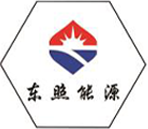
Aug . 20, 2024 06:01
Back to list
relief valves
Relief Valves Essential Components for Safety and Efficiency in Pressure Systems
Relief valves are critical devices used in various industrial applications to maintain safety and ensure the efficient operation of pressure systems. These valves act as a safeguard against overpressure scenarios, which can lead to catastrophic system failures, equipment damage, and safety hazards. In this article, we will explore the functionality, types, applications, and importance of relief valves in modern engineering.
Functionality of Relief Valves
The primary function of a relief valve is to control the pressure within a system by providing a predetermined escape route for excess fluid or gas. When the pressure in the system exceeds a specified limit, the relief valve opens to release the excess pressure, thereby preventing potential damage. Once the pressure drops back to normal levels, the valve closes, effectively maintaining the desired operating pressure.
Relief valves are designed with a spring-loaded mechanism that determines the set pressure at which the valve will open. The spring tension can be adjusted to set the desired pressure limit. When the system pressure reaches the set point, the force exerted by the fluid or gas overcomes the spring force, causing the valve to lift and allow the release of excess pressure.
Types of Relief Valves
There are several types of relief valves, each designed for specific applications and characteristics. The most common types include
1. Spring-Loaded Relief Valves These valves use a spring mechanism to close the valve when the pressure is below the set point and open it when the pressure exceeds the set point. They are widely used in various industries due to their reliability and simplicity.
2. Pilot-Operated Relief Valves These valves utilize a smaller pilot valve to control the opening and closing of a larger main valve. They are typically used in high-pressure applications and are known for their precise pressure control.
relief valves

3. Safety Relief Valves These valves are designed for instant opening under overpressure conditions and are often used in conjunction with boilers and pressure vessels to prevent explosions.
4. Thermal Relief Valves These valves automatically open to relieve pressure caused by thermal expansion of fluids, making them essential in systems where temperature fluctuations are common.
Applications of Relief Valves
Relief valves find applications across various industries, including
- Oil and Gas In oil refineries and gas processing plants, relief valves are crucial for preventing overpressure in pipelines and storage tanks. - Chemical Processing These valves are used in reactors and pressure vessels to protect against dangerous pressure buildup from chemical reactions. - HVAC Systems In heating, ventilation, and air conditioning systems, relief valves help manage pressure changes caused by temperature fluctuations. - Manufacturing In many manufacturing processes, relief valves ensure that pneumatic and hydraulic systems operate safely within designated pressure limits.
Importance of Relief Valves
The importance of relief valves cannot be overstated. They play a vital role in ensuring the safety and efficiency of pressure systems. By preventing overpressure situations, relief valves help avoid equipment failure, reduce downtime, and protect personnel from hazards associated with high-pressure systems.
Furthermore, regulatory bodies mandate the use of relief valves in many applications to ensure compliance with safety standards. Regular maintenance and testing of these valves are essential to ensure their proper functioning and reliability.
In conclusion, relief valves are indispensable components in the management of pressure systems across a wide range of industries. Their ability to maintain safe operating conditions not only protects equipment and personnel but also enhances the overall efficiency of industrial processes. As technology continues to evolve, the design and functionality of relief valves will also advance, further improving safety and performance in pressure management systems.
Latest news
-
Safety Valve Spring-Loaded Design Overpressure ProtectionNewsJul.25,2025
-
Precision Voltage Regulator AC5 Accuracy Grade PerformanceNewsJul.25,2025
-
Natural Gas Pressure Regulating Skid Industrial Pipeline ApplicationsNewsJul.25,2025
-
Natural Gas Filter Stainless Steel Mesh Element DesignNewsJul.25,2025
-
Gas Pressure Regulator Valve Direct-Acting Spring-Loaded DesignNewsJul.25,2025
-
Decompression Equipment Multi-Stage Heat Exchange System DesignNewsJul.25,2025

